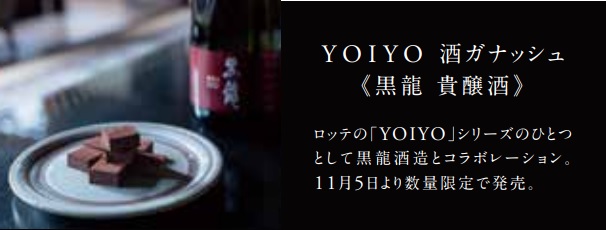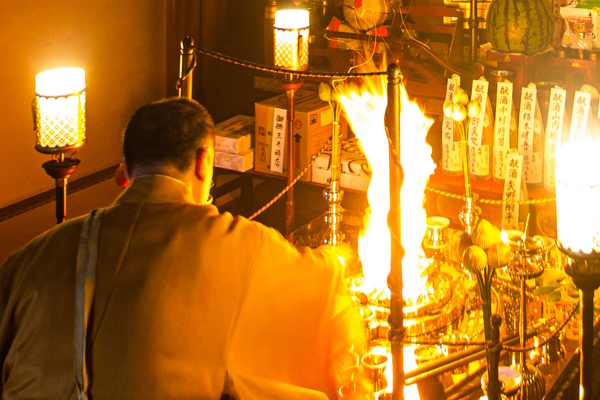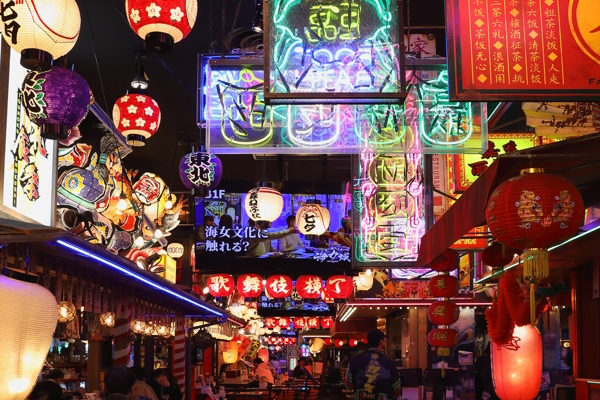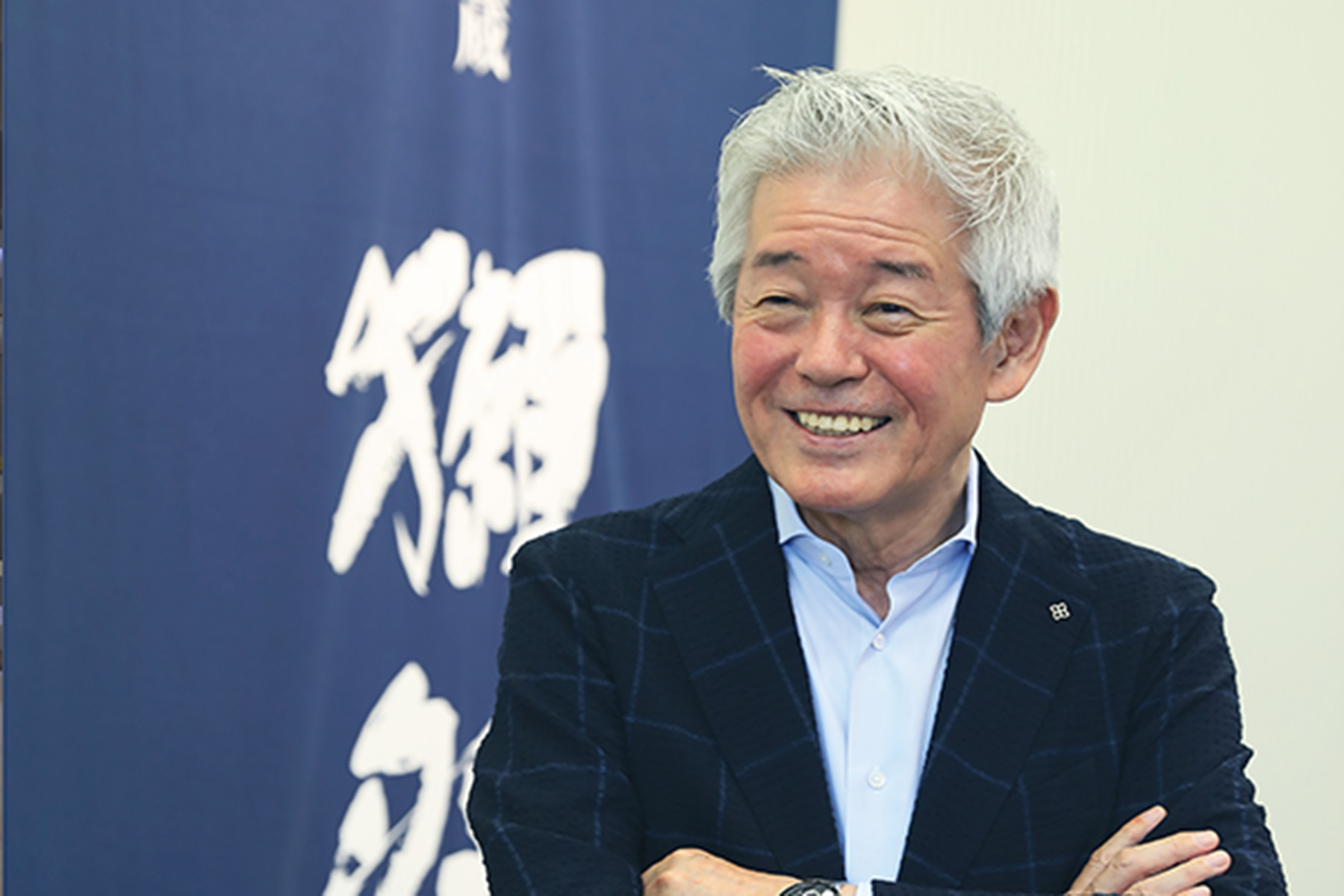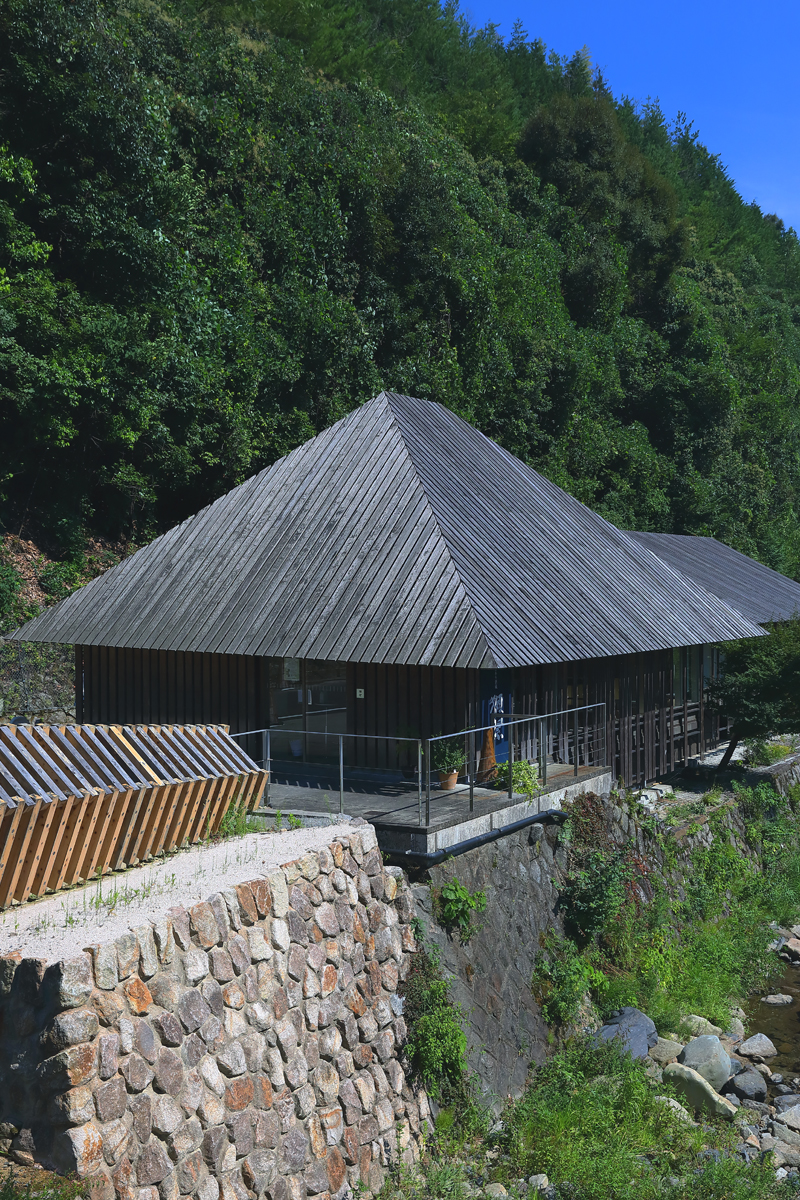
世界の日本酒へ。
世界の日本酒へ。
日本酒が世界へ進出しているという話。

若者を中心にアルコール離れが進んでいるという。 そんななか、日本酒を選ぶ人も減っている。 この現状をなんとかしようと、海外へ活路を求めたブランドがある。 評判は上々で、そのうちに海外生まれの日本酒が日本へ輸入されるようになるかもしれない。 世界をターゲットにする日本酒を紹介する今号のyoff 。 この号を読んで、今夜は熱燗だ、なんて思ってもらえればうれしいです。
世界の日本酒へ。
Feature | 2024.11.22
ビールや焼酎を飲む人も、日本酒は敷居が高いという。
銘柄が多く、純米や吟醸、本醸造な製造方法も多い。
さらに全国には約1500もの蔵があるとされ、
それぞれに違った味で、何を選んでいいかわからない。
でも、そんな日本酒が好きという人も多くいる。
おいしいだけではなく、
日本文化としての価値もあるという。
国内だけでなく、海外でも、日本酒が愛されはじめている。
For some, sake is more intimidating than beer or shochu.
With numerous brands and brewing styles—like junmai, ginjo, and honjozo—
and some 1,500 breweries nationwide,
each offering unique flavors, it’s often hard to know where to begin.
Yet, many savor this distinctively Japanese drink, not only for its taste but also its cultural value.
Sake’s appeal now extends worldwide.

獺祭の酒蔵
「ソバーキュリアス」という言葉がある。お酒を飲めるが、あえて飲まない、あるいは少量だけ楽しむというライフスタイルをもつ人を指す。そういえばコロナ禍後、アルコール離れが進んでいるとも聞く。ノンアルコールビールもいまやあたりまえで、アルコールゼロなのにどんどん進化して、まるでビールのような味になっているという、なんともややこしい状態。ヨーロッパでもワインを飲む人が減ったといい、それでは日本酒は?と思いきや、やはり飲む人が減っているという。
そんななか、日本酒の魅力を再発見しようという動きもある。料理との上手なペアリングでお互いの味がひきたつ。寒いときの熱燗、暑いときの冷酒、どちらも日本の風物詩。地方によって、銘柄によって、異なる豊かな味わい。香しく、豊潤なうまさはどこか神秘的。日本酒造組合中央会のホームページによると、平安時代(8世紀~12世紀)には、宮廷の行事用の酒を作るようになったと書かれている。日本酒は、日本の文化として根づいている。
There’s this word, “sober curious.” It refers to people who can
drink alcohol but choose not to, or to only enjoy it in small amounts.
By the way, post-pandemic, alcohol consumption has generally
declined, and there are now non-alcoholic options like
non-alcoholic beer that closely resemble the real thing. In Europe,
fewer people reach for wine, and the same is true for sake in Japan.
Even so, a movement to re-embrace sake is gaining ground.
Pairings with food bring out its best notes—hot sake in winter,
chilled in summer, each an ode to Japan’s seasons. Each region and
brand offers unique and rich flavors, inviting exploration.
According to the Japan Sake Brewers Association, sake has been
woven into Japan’s culture since the Heian period (8th–12th
century), when it was crafted for imperial ceremonies.
Now, the world is taking notice. Dassai, a beloved sake brand, has
a brewery in New York, and appreciation for sake continues to grow
in Europe. Even French cinema legend Gérard Depardieu chairs a
sake appreciation society.
As sake garners international acclaim, Japan, too, is re-evaluating
this traditional drink. Japanese whiskey saw a similar resurgence,
with brands like Yamazaki and Hibiki skyrocketing in popularity
and price.

獺祭ブルー酒造
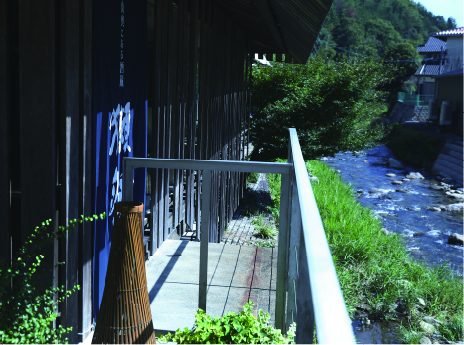
獺祭の酒蔵

JAPAN CRAFT SAKE COMPANY


JAPAN CRAFT SAKE COMPANY
そんな日本酒はいま、海外でも注目されている。日本を代表する日本酒「獺祭」はニューヨークに酒蔵をもち、ヨーロッパでも日本酒人気は高まっている。そういえばフランスの名優、ジェラール・ドパルデューは日本酒愛好家団体の会長をしていた。
日本酒は海外を目指す、そうするうちに日本でも見直す人がでてくる。ウイスキーもあるとき突然、国内外でブームになり、「山崎」や「響」が高騰した。
お酒を飲まない人がいてもいい。でも酒飲みがいるのも楽しい。飲んで、喋って、たまに歌って。そういえばそろそろ忘年会のシーズン。今年は日本酒で盛り上がってみるのもいいかもしれない。
It’s fine if you don’t drink sake. But it’s also fun to have drinkers around. Drinking, chatting, and singing at times. With year-end celebrations approaching, perhaps this season is the perfect time to toast with sake.
酒のうまさを追求する、その先に世界が見える。
Feature | 2024.11.22
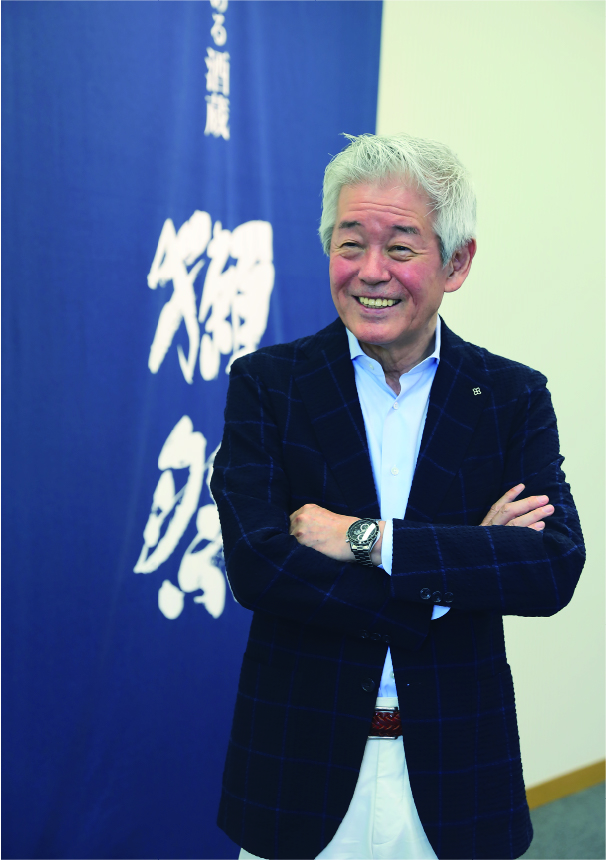
旭酒造会長 桜井 博志氏
うまければ人に選ばれ、うまくなければ人が離れる。
シンプル、だけど難しい道を獺祭は真摯に歩みつづけている。
獺祭という酒がある。日本酒を飲まない人も名前は耳にしたことがあると思う。山口県の旭酒造が「酔うため、売るための酒ではなく、味わう酒を求めて」醸している酒。いまでは海外へも販路を拡大している。そんな勢いが止まらない獺祭のいまとこれからを、旭酒造の桜井会長に聞いてみた。
「そもそも日本酒という呼び方は好きではありません」と語りはじめた桜井会長。「ワインを仏酒とはいいませんよね、なのに日本酒という。なんだか縛りがあるというか、自由度がないというか。海外で生産していると違和感があります」。のっけから世界を視野に入れている桜井会長らしい話がでてきた。
「いま清酒から若い人が離れていて、それはデータにも現れています。それなのに業界全体に危機感がありません。みんなそれなりに酒を広めようとしているのでしょうが、いまひとつピントが合っていな」。確かに、日本酒の業界は様々な手で酒ファンを獲得しようとしているが、それは方向が違う?
「うまくないから人が離れていくし、うまければ人に選ばれる。それは簡単な話です。ただ、うまい酒をつくるのは簡単ではなく、そこを切磋琢磨にやっていかなければならない。多くの人に飲んでもらう、つまり売れるために私たちは思考し、丁寧に、酒づくりを行っています」。
酒の味にこだわることが販路を拡げる。「戦略はありません。いい酒をつくって、飲んでもらって、そこに結果がでる。獺祭は1984年に9,700万円だった年間売上が2024年には197億円になろうとしています。この数字はうまさの結果だと思っています」。
獺祭はさらにたくさんの人からの“おいしい”を獲得するために海外へと進出している。「いま、さらなる拡大を実現するなら海外をマーケットにするしかありません。そんなとき舞台としたいのは市場が大きいアメリカです。そこでニューヨークに酒蔵をつくり『DassaiBlue』というブランドを立ち上げました」。
2023年に完成したニューヨークの酒蔵は日本でも大きな話題になった。「アメリカへの進出は長年の願いでした。しかし苦労しています。アメリカの大衆社会は多少チープでも安いものを選ぶ傾向があり、プレミアムな酒はなかなか手に取ってもらえない。最初は理解できなくても、うまければわかってもらえることを信じて、ニューヨークでの酒づくりをつづけています」。
桜井会長は日本センチュリー交響楽団の理事長でもあり、いまのクラシック音楽を取り巻く環境は日本酒業界と似たところがあるという。「クラシック音楽は文化というところにあぐらをかいていて、若い人が入ってきづらくなっています。それは清酒業界と似ているのかもしれません」。“日本酒”は日本にとらわれることなく自由に世界へと羽ばたいていく必要がある。「いま、アルコール消費が減っています。酒には酔うだけではなく、おいしさ、味わいも求められています。そこを提供できないと生き残れません。獺祭はワインやシャンパンを超えて世界に愛される、年間売上1,000億円の酒となることを目指しています」。獺祭は日本酒という域を超えようとしている。
The pursuit of taste in sake opens up new worlds.
Sake, if it’s truly good, earns loyalty; if it isn’t, people move on.
Dassai continues to walk this simple yet difficult path with sincerity.
Even those who don’t drink sake have likely heard of Dassai. Produced by Asahi Shuzo in Yamaguchi Prefecture, this sake was crafted not “to intoxicate or merely sell, but to be savored.” Today, its reach extends overseas. We spoke with Sakurai about Dassai’s journey and what lies ahead.
“Frankly, I dislike the term ‘nihonshu’ (Japanese sake),” Sakurai confides. “They don’t call wine ‘French wine’ in France, do they?It’s limiting, especially when we’re producing abroad.” From the start, Sakurai’s global perspective is clear. “Young people are moving away from sake, and the data confirms it. Yet the industry lacks a sense of urgency. Everyone’s trying to promote sake, but their approaches often miss the mark.”
Sakurai believes simplicity reigns: “People stray when the product isn’t excellent, and they stay when it is. Making exceptional sake is not easy—it requires constant refinement. We focus on taste and quality, and through this dedication, we’ve grown our reach.”
With no elaborate marketing strategy, Dassai’s journey speaks for itself: from 97 million yen in annual sales in 1984 to a projected 19.7 billion yen in 2024—an achievement Sakurai credits purely to quality.
Now, Dassai is expanding globally to capture even more palates. “To grow further, we must target international markets, particularly the U.S. With this vision, we established a brewery in New York and launched the Dassai Blue brand,” Sakurai explains.
Completed in 2023, the New York brewery garnered considerable attention even in Japan. “Expanding to the U.S. has been a long-held goal of ours. However, the American market tends to favor affordable options over premium quality. Despite initial challenges, we believe our quality will eventually be recognized, and we’re committed to crafting sake in New York.”
Also chairman of the Japan Century Symphony Orchestra, Sakurai sees parallels between the classical music world and the sake industry. “Classical music is often seen as untouchable culture, making it less accessible to younger audiences—much like sake.” He envisions sake freed from its traditional confines. “Alcohol consumption is declining, and people now seek flavor, experience, and nuance in what they drink.
Without that, we won’t survive. Dassai aims to surpass wine and champagne, striving for a future where sake is loved worldwide and reaches 100 billion yen in annual sales.” Dassai is aiming to transcend the traditional bounds of Japanese sake.

獺祭の酒蔵
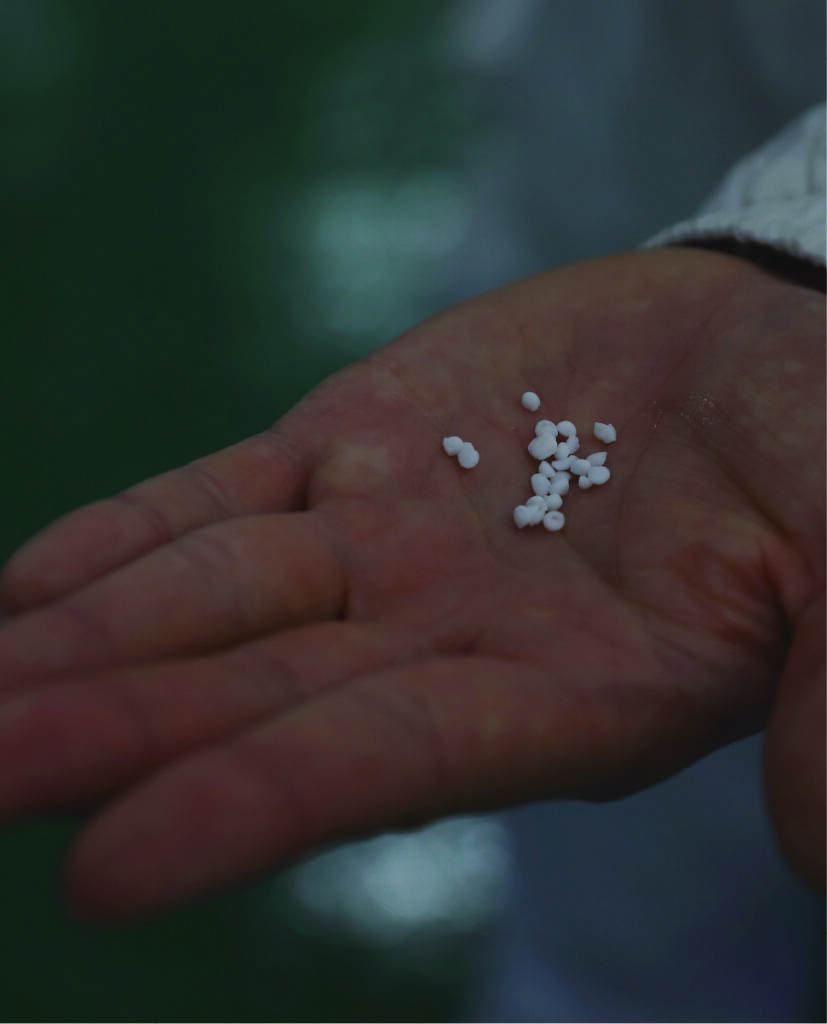
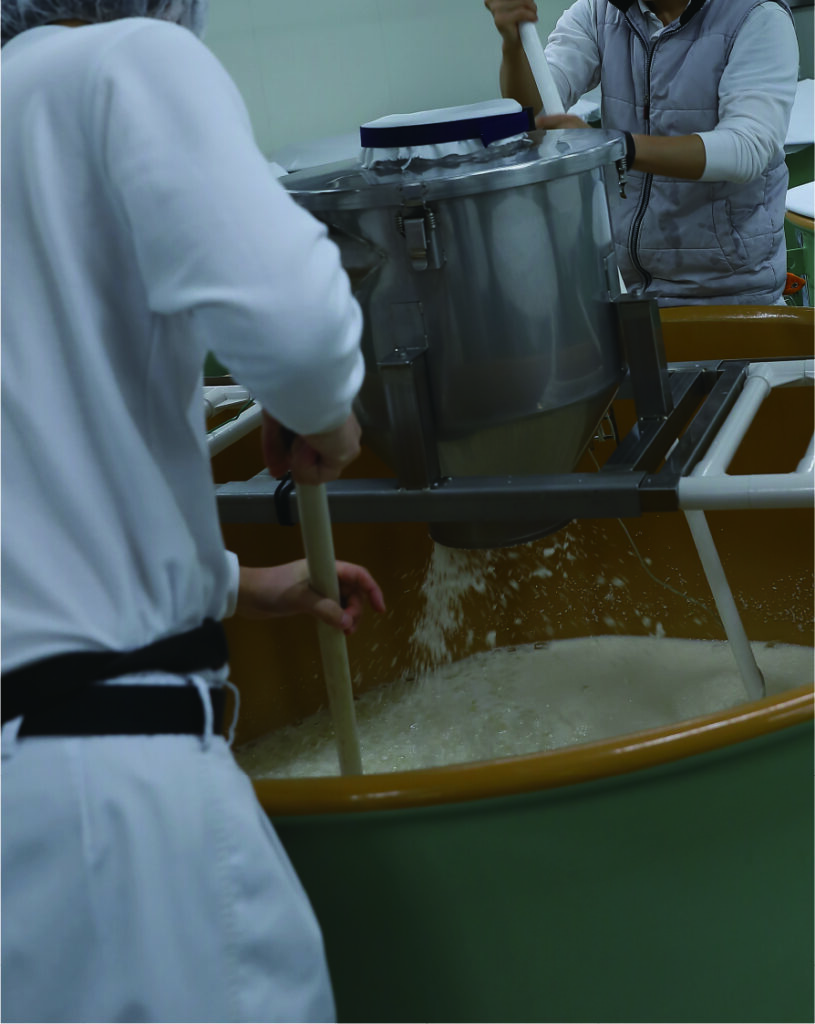
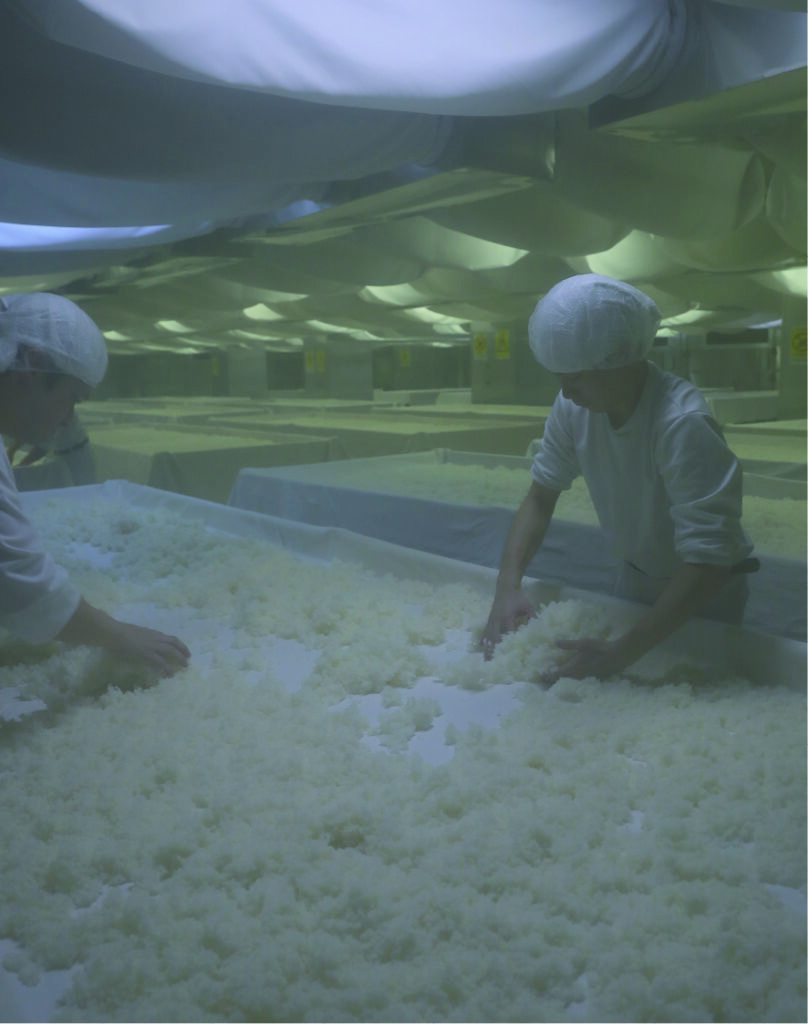
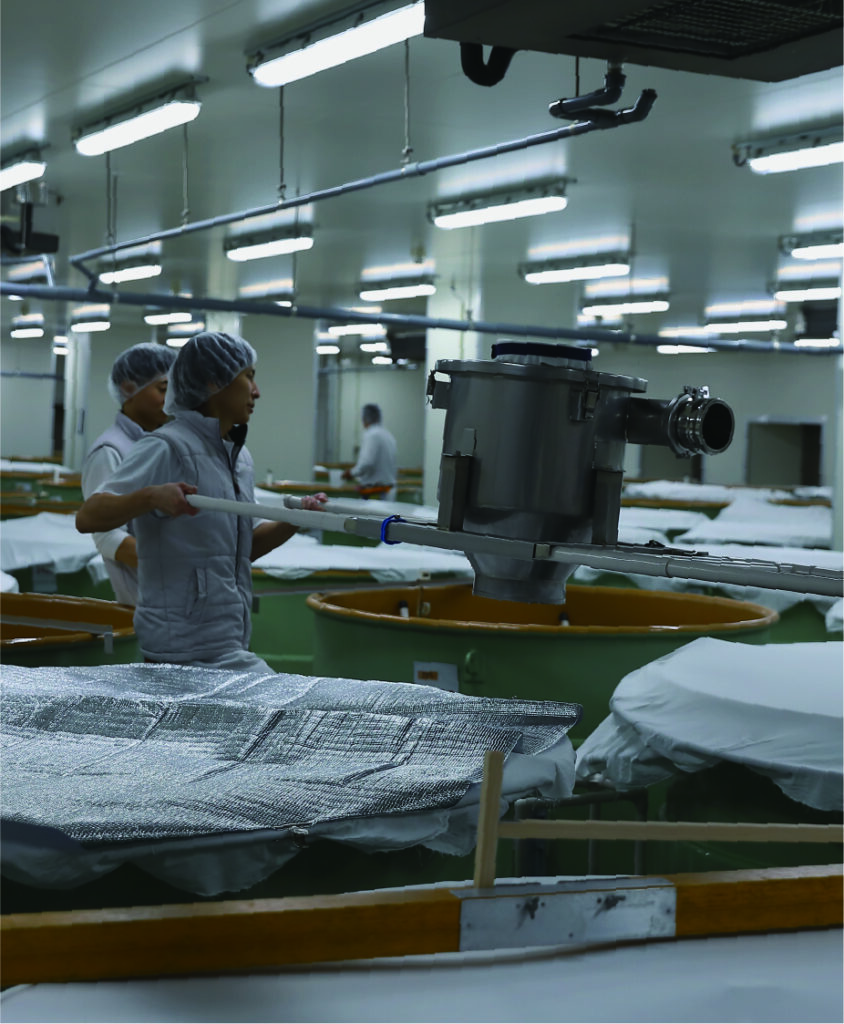
獺祭の酒蔵
人がうまいと思うものは、こだわりをもって、人がつくる。

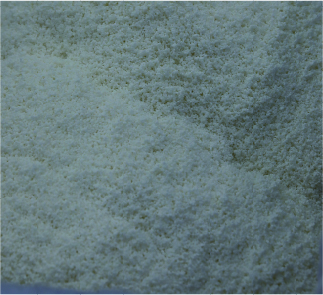




ビルの一室には「分析室」がありセンサーによる情報収集とデータ分析を駆使し、徹底した品質管理を行っています。
獺祭の酒蔵には杜氏がいない。
そこでは若いスタッフたちが酒づくりを行っている。
つくりにこだわり、うまさが人を惹きつけ、広く愛されるようになる。広告を必要とせず、味こそがすべてと酒づくりに取り組む旭酒造。
獺祭の酒蔵は山口県岩国市にある。ここで主役になるのは人。酒づくりに情熱をもち、良い酒をつくるという共通の目的で集まったスタッフたちだ。旭酒造では通常よくある杜氏や蔵人による酒づくりではなく、社員だけで酒づくりを行っている。通常は10年以上かけて経験する純米大吟醸の仕込み本数を、この蔵では1年で仕込む。だから若手でも、純米大吟醸づくりではベテランの杜氏にも引けをとらない経験が積めるという。
獺祭の製造工程には「洗米」「蒸米」「麹造り」「仕込み」「上槽」「瓶詰」があり、それぞれにこだわりが息づいている。例えば「洗米」では、洗米後に極度に水分を失った米を0.3%以下の精度で元の水分含有量に戻すため、すべてを手洗いで厳密にコントロールしている。手間はかかるが、最新の精米機器でもここまで繊細な作業はできないのだという。
「蒸米」では、外硬内軟な蒸し上がりの米をつくるために、敢えて労力が必要な和釜の技法を採用。また「麹造り」は人の手だけで行われ、昼夜を問わず4人体制で制麹をしている。他にも0.1%の精度でのもろみの温度管理や、こだわってつくられた味をそのまま瓶に詰めるための独自の技術など、隅々にまで獺祭ならではの製法がみられる。
獺祭の蔵では、もちろん機械もあるが、その工程のほとんどが人に頼ったものになっている。これは獺祭が要求する精度や品質を実現するためには、酒づくりを熟知した人の感性や技術、ノウハウが必要だから。
人だけが、人が本当にうまいと思えるものをつくることができる。いまの時代では忘れられている大切なことが、この蔵ではあたりまえに行われている。
Products that people love are crafted with passion by people. At Dassai’s breweries, there are no traditional master brewers and cellar workers.
Dedication to the craft draws people in, making Dassai a beloved choice—no need for advertisements when flavor speaks for itself.
Nestled in Iwakuni, Yamaguchi, Dassai’s brewery places people at its core. Here, a team united by their shared passion for creating outstanding sake pursues excellence, not through traditional master brewers but through the skills of dedicated employees. At Dassai, the production of Junmai Daiginjo sake—a process that might take over a decade to master elsewhere—is accomplished by these young artisans within a year, allowing them to gain unparalleled expertise.
The sake-making process involves meticulous steps like rice washing, steaming, koji preparation, fermentation, pressing, and bottling, each infused with exacting care.
For instance, the rice is washed by hand to restore the precise moisture level within 0.3% accuracy—a task too delicate even for the latest machinery. Traditional Japanese steaming techniques ensure a firm exterior with a soft core, while the koji-making process is supervised around the clock by a team of four, entirely by hand.
Temperature control within 0.1% accuracy and proprietary methods that capture the true flavor in every bottle are among the painstaking measures that define Dassai’s distinctive production.
Although Dassai uses machines, most steps rely on skilled hands, essential for meeting the brand’s rigorous standards. This is because the sensitivity, skills and know-how of people who are well-versed in sake brewing are necessary to achieve the precision and quality that Dassai demands.
Only human intuition and expertise can create products that truly resonate with people. In today’s world, such commitment may seem rare, but at Dassai’s brewery, it’s simply how things are done.
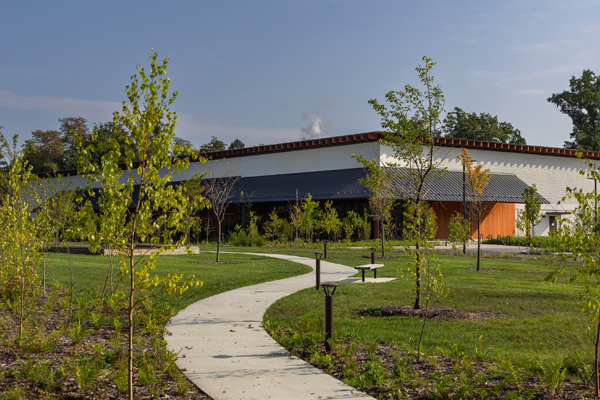

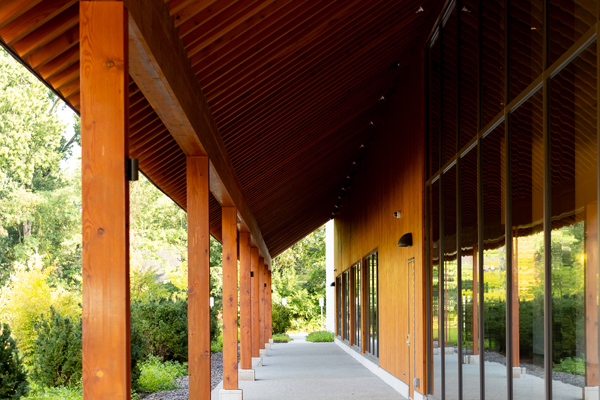
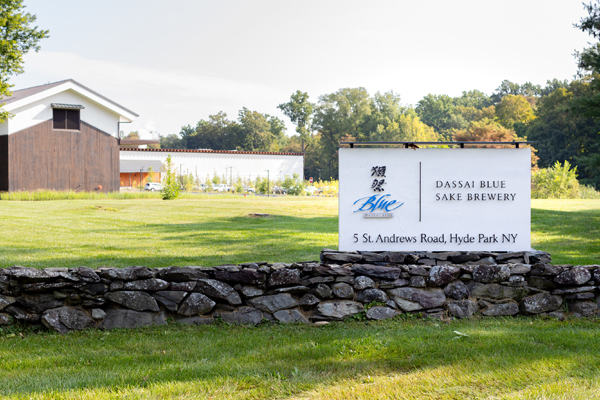
世界の酒となるために、ニューヨークへ進出。
DassaiBlue。
ニューヨークにはニューヨークの最高の獺祭がある。
海外マーケットを舞台にワインやシャンパンと並ぶ酒にする。その想いを実現する先駆けとして、ニューヨーク州のハイドパークに獺祭の酒蔵とテイスティングルームがある。
ここでつくられているのは獺祭の米国ブランド「Dassai Blue」。日本の獺祭と同じく、最高級のプレミアム日本酒を追求するために、100%山田錦という日本酒の究極基準とされる米でつくられている。この山田錦は、いまは日本のものを使っているが近い将来にはアメリカ産の山田錦を併用する予定だという。さらに、炭素排出量の削減や持続可能なサプライチェーンの確立など、環境への配慮もされている、Dassai Blueの酒蔵は55,000平方フィートの広さがあり、年間生産量は最大140,000ケース。日本からのベテランスタッフと地元ニューヨークのスタッフが一緒になって酒を手づくりしている。Dassai BlueのWEBサイトにはこう書かれている。 “NYに酒工場のコピーをつくり、物流コストを抑えてこれまでと同じような製品をつくるつもりはない。山田錦だけ、純米大吟醸だけというスタイルは同じに、NYという環境の中で、ハドソン渓谷の水で最高の酒を造る” 。常に最高を追い求める獺祭の矜持が現れたメッセージだ。2023年、このニューヨークの酒蔵づくりが発表されたとき桜井会長は「米国への酒づくりの進出は、30年前に獺祭を世にだしたときの私の願い。世界中で獺祭を楽しんでもらいたいという希望の実現に向けた重要な一歩です」と語っていた。そしてその一歩から、二歩、三歩と、獺祭は世界の日本酒となるための道を確実に進んでいる。
Introducing Dassai Blue—the finest Dassai, crafted in New York for New York and the wide world.
To stand alongside wine and champagne on the global stage, Dassai has established a brewery and tasting room in Hyde Park, New York.
This location produces Dassai’s American brand, Dassai Blue, a premium sake crafted from 100% Yamada Nishiki rice, revered as the gold standard for sake.
Currently sourced from Japan, the rice will soon include American-grown Yamada Nishiki. In line with Dassai’s commitment to sustainability, efforts are also underway to reduce carbon emissions and create an eco-friendly supply chain.
The Dassai Blue brewery spans 55,000 square feet, with an annual production capacity of up to 140,000 cases. It brings together experienced artisans from Japan and local New York staff to handcraft sake with the utmost care.
As the website for Dassai Blue states, “Our goal is not to simply replicate a Japanese brewery in New York to cut logistics costs. Instead, with the same commitment to 100% Yamada Nishiki and Junmai Daiginjo, we aim to craft the finest sake using the waters of the Hudson Valley, inspired by the unique environment of New York.” This vision embodies Dassai’s unwavering dedication to excellence.
When the New York brewery was announced in 2023, Chairman Sakurai reflected, “Our expansion into sake-making in the U.S. fulfills a dream I had when Dassai was introduced 30 years ago—an important step toward sharing Dassai with the world.” With each new step, Dassai moves ever closer to its goal of becoming a truly global sake.
日本酒をはじめとして、日本文化を世界へと広める「JAPAN CRAFT SAKE COMPANY 」。
Feature | 2024.11.22
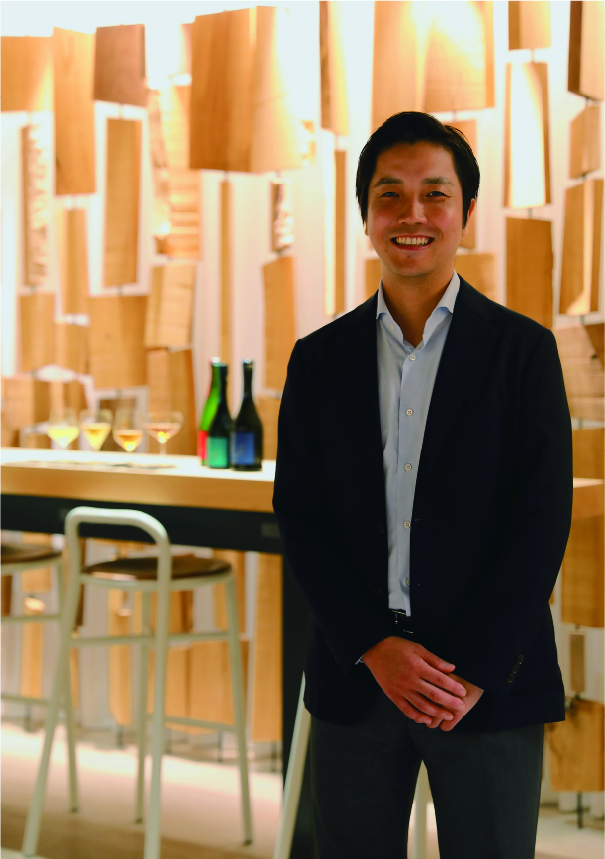
JAPAN CRAFT SAKE COMPANY 時本 禎史氏
情報を拡散するだけでなく、流通システムや
日本酒アプリやブロックチェーンの開発など
リアリティのある活動で日本と世界をつなぐ。
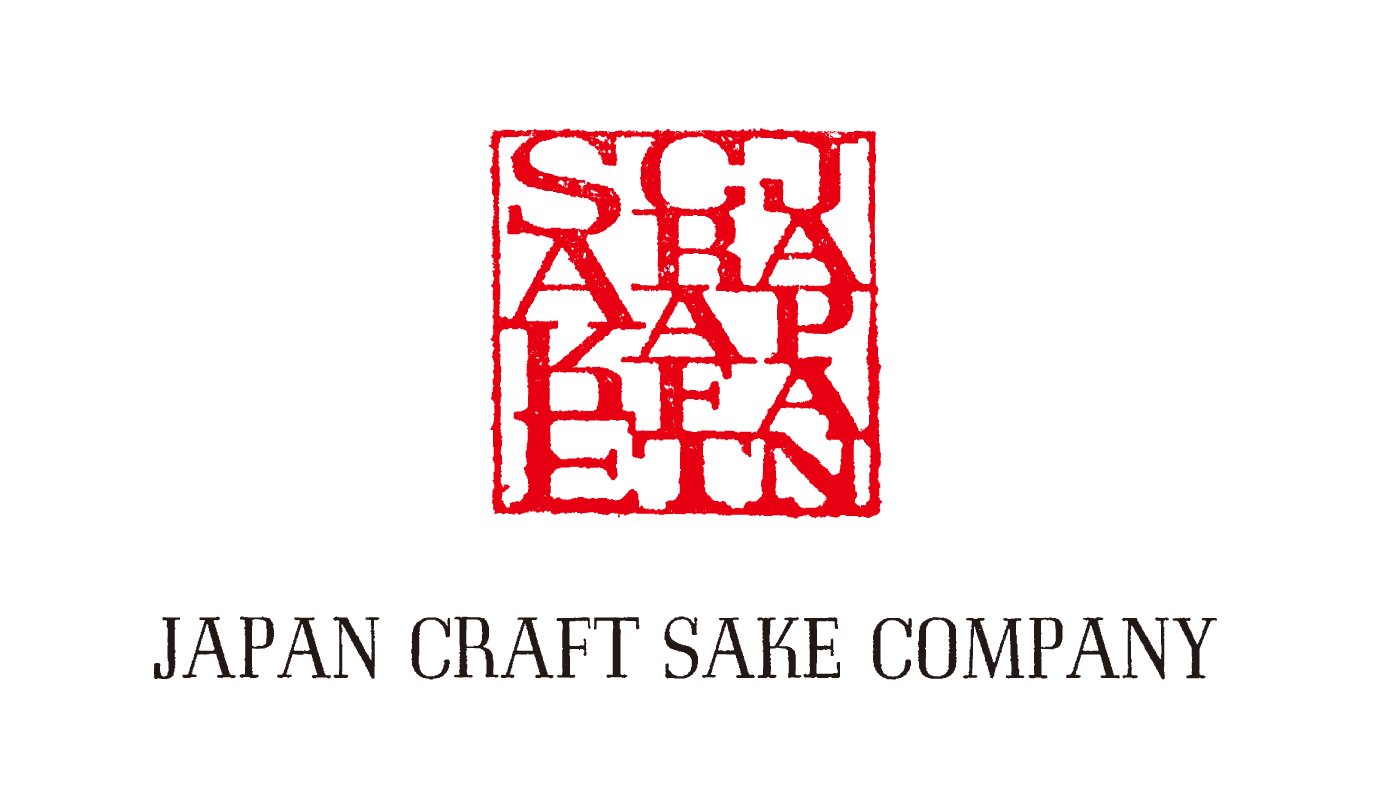
日本の可能性を世界に、未来に伝えていくために、日本文化の発信を積極的に行っている、中田英寿氏が代表をつとめる「JAPANCRAFTSAKECOMPANY」。企業名にSAKEとあるように、日本酒の海外輸出コンサルやブロックチェーンの運用・開発、商品開発、イベントなどを実施している。
そんな「JAPANCRAFTSAKECOMPANY」の多彩な活動内容について、日本酒アプリやブロックチェーンの開発などを担当している時本禎史さんに話をうかがった。
まず「JAPANCRAFTSAKECOMPANY」が考える日本酒とはなんですか。「日本の伝統や風土に深く根づいたものだと思っています。地鎮祭などの宗教儀式にも欠かせません。また地域の食文化とも密接に関わっています。そういった観点からも、日本酒は日本文化を代表するもののひとつだといえます」。
そんな日本酒にまつわる様々な活動をされているなか、特に力を入れているのは?「ひとつは日本酒ソムリエアプリ『Sakenomy』の開発と運用です。日本酒はラベルに大切な情報が多く載っていますが、海外の方などは読むことができません。そんな問題を解決するのが『Sakenomy』です。使う人は文字検索やラベルを撮影するだけで酒蔵の情報を知ることができます。また酒蔵おすすめの日本酒の提供温度や相性の良い料理など、飲食店の方にとっても有益な情報を得ることができます」。
なるほど、酒蔵から消費者へと直接、情報発信ができるのですね。他にはありませんか。「日本酒のブロックチェーン『SakeBlockchain』にも力を入れています。これは私たちが開発した流通管理システムで、日本酒1本1本にQRコードをつけ、酒蔵から海外のディストリビュータ、さらには世界中のレストランまで、1本単位で管理できます。また『ColdChainSystem』を併用すれば、-3°C~-5℃で世界中に輸出することが可能。また世界中のレストランでの商品回転率まで分かります」。
それらシステム開発以外にも、イベントなども企画されていますね。「代表的なのは『CRAFTSAKEWEEK』です。毎年、六本木で開催していて、これまでの累計では延べ100万人の来場者となっています。全国の日本酒が飲めるだけでなく、著名なシェフによるフードペアリングや人気作家による工芸品など、ここだけの日本文化が揃ったイベントになっています」。
商品開発もされていますよね。「日本酒ブランドéks(エクス)』があります。これは料理に合わせてつくられた日本酒で、まずは“天ぷら”と“焼肉”の2つの料理ジャンルからスタート。間もなく”懐石”、”鮨”も販売予定です。様々なジャンルのトップシェフが酒蔵に足を運び、味わいについて蔵元と話し合い、何度も試作を重ねて造り上げる“究極のマリアージュ体験ができる日本酒”です」。
おいしい酒の製造だけでなく、海外も視野にいれた流通システムを開発し、消費者と製造者を結ぶプラットフォームを築き、日本酒、そして日本文化を世界へと発信する「JAPANCRAFTSAKECOMPANY」。その活動は日本の価値を高めていく。
JAPAN CRAFT SAKE COMPANY: Spreading sake and Japanese culture worldwide.
Connecting Japan and the world through practical initiatives, from distribution systems to blockchain development—besides sharing information.
The Japan Craft Sake Company, led by Hidetoshi Nakata, actively promotes Japanese culture globally to showcase Japan’s potential for the future. As its name suggests, the company focuses on sake, offering overseas export consulting, blockchain operations, product development, and events.
We spoke with Yoshifumi Tokimoto, who oversees sake apps and blockchain development, to learn more about their wide-ranging initiatives.
What does the Japan Craft Sake Company see in sake? Tokimoto explains, “Sake is deeply rooted in Japan’s traditions and landscapes. It is integral to rituals like ground-breaking ceremonies and closely connected to regional culinary cultures. Sake embodies Japanese heritage.”
Among your many sake-related projects, which ones are you particularly focusing on? “One is the development and management of the Sakenomy app. Sakenomy allows users to learn about breweries by scanning labels or searching by text—a solution for international sake enthusiasts who may struggle with Japanese labels. It also provides recommended serving temperatures and ideal food pairings, a valuable tool for restaurateurs.”
This way, the brewery can send information directly to consumers. Another project is the Sake Blockchain, an innovative distribution management system.
“Each bottle has a QR code, enabling one-by-one tracking from the brewery to international distributors, and even restaurants globally. With our Cold Chain System, sake can be exported at an optimal -3°C, while also monitoring turnover rates at restaurants worldwide.”
In addition to tech solutions, the company organizes events like CRAFT SAKE WEEK in Roppongi, an annual gathering that has already attracted over a million visitors. It’s a cultural showcase, featuring renowned chefs’ food pairings and artisanal crafts from top artists.
They also launched the éks brand—a sake line designed for pairing with specific cuisines. The initial releases focus on tempura and yakiniku, with plans to add kaiseki and sushi soon. Crafted with input from top chefs who work closely with brewers, éks is sake designed for the “ultimate pairing experience.”
Not content with sake alone, the Japan Craft Sake Company is expanding Japan’s influence through a unique distribution system, connecting consumers and brewers, and promoting Japanese culture globally.
株式会社 JAPAN CRAFT SAKE COMPANY
https://craftsake.jp/
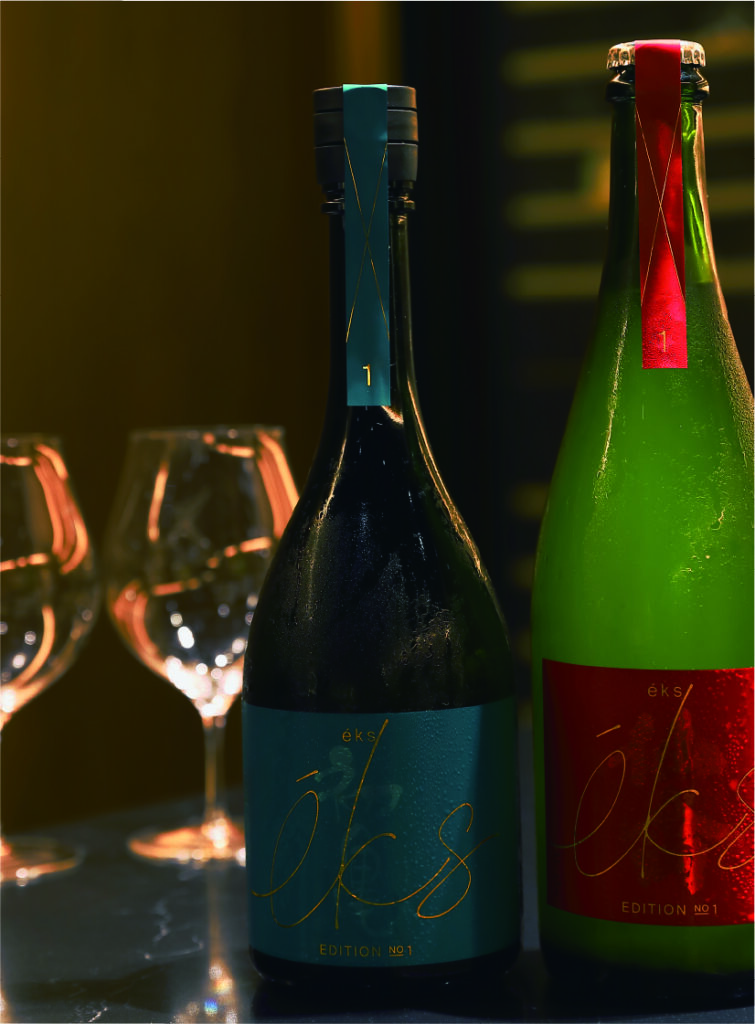
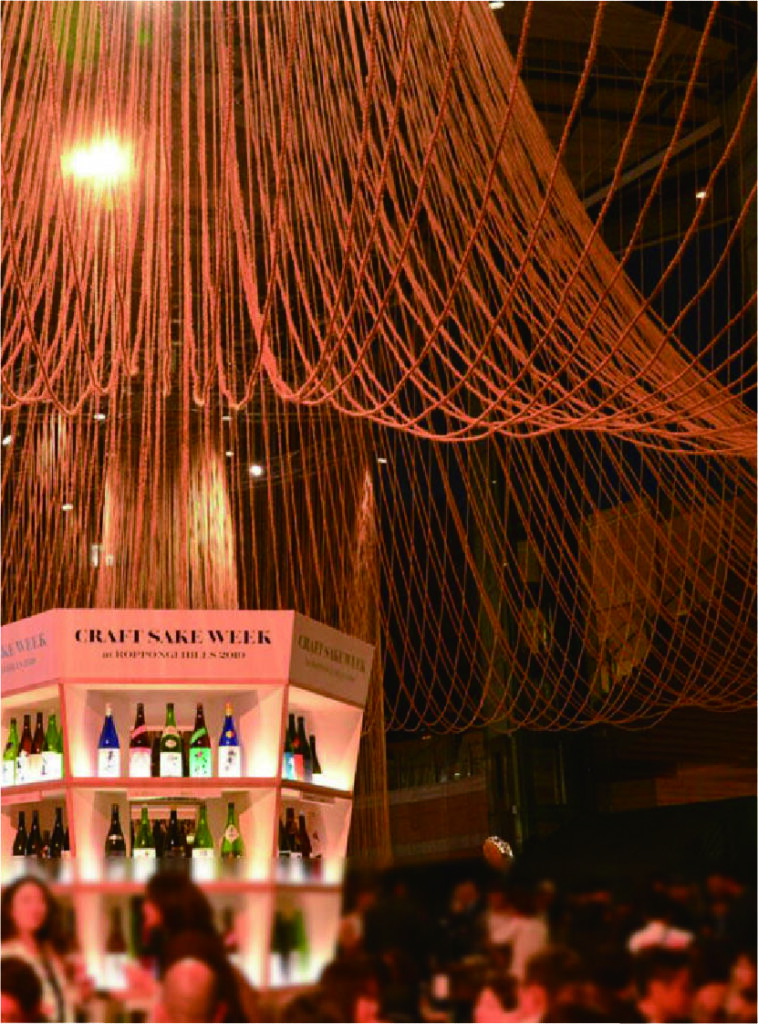
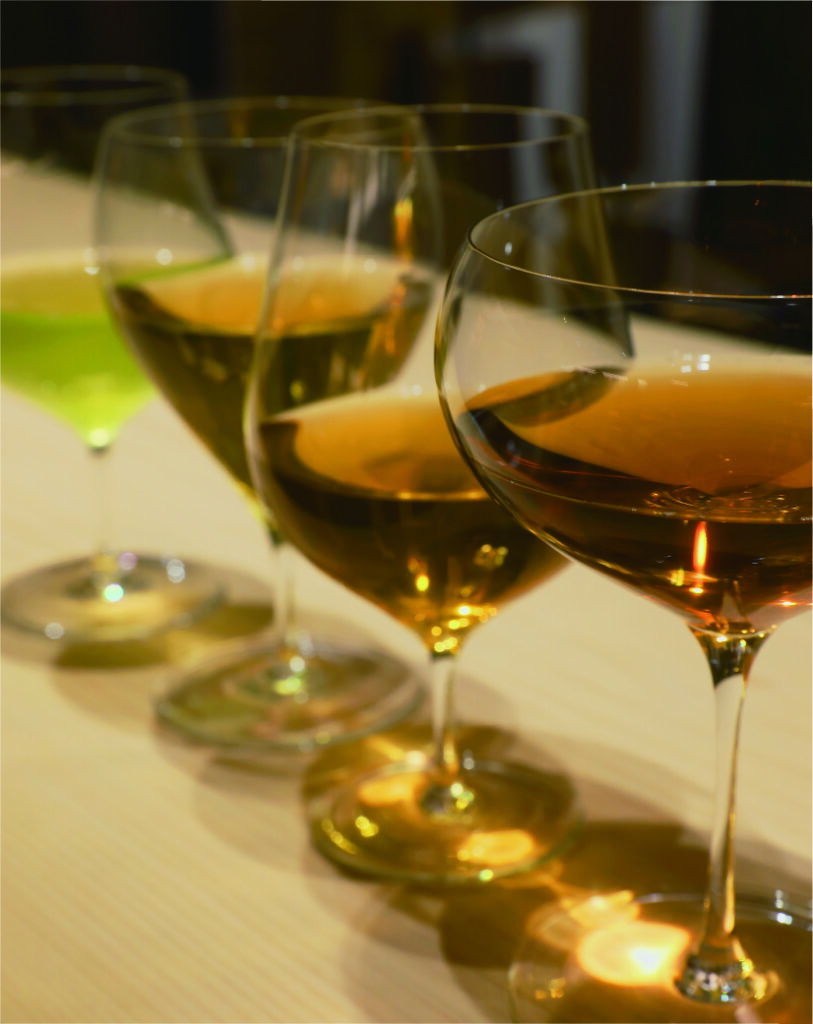
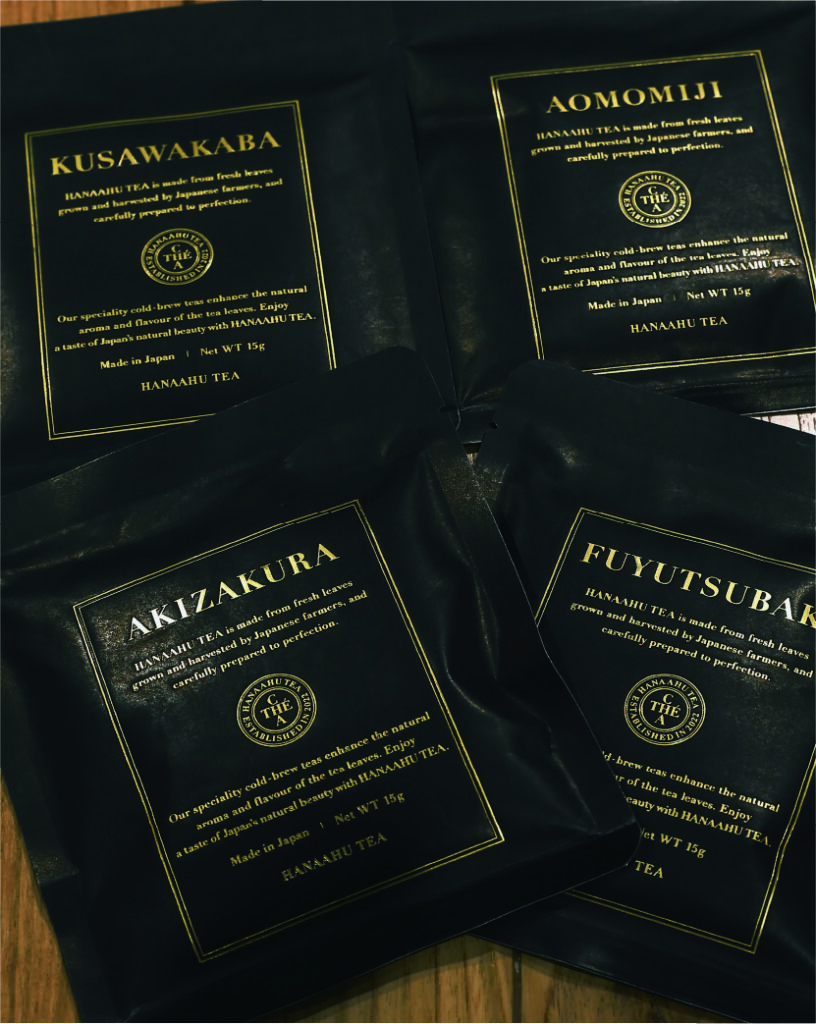
HANAAHU TEA
「JAPAN CRAFT SAKE COMPANY」では日本茶プロジェクトを実施。
春夏秋冬それぞれの季節に合わせた味わいが愉しめる日本茶を飲食店へ提供している。


